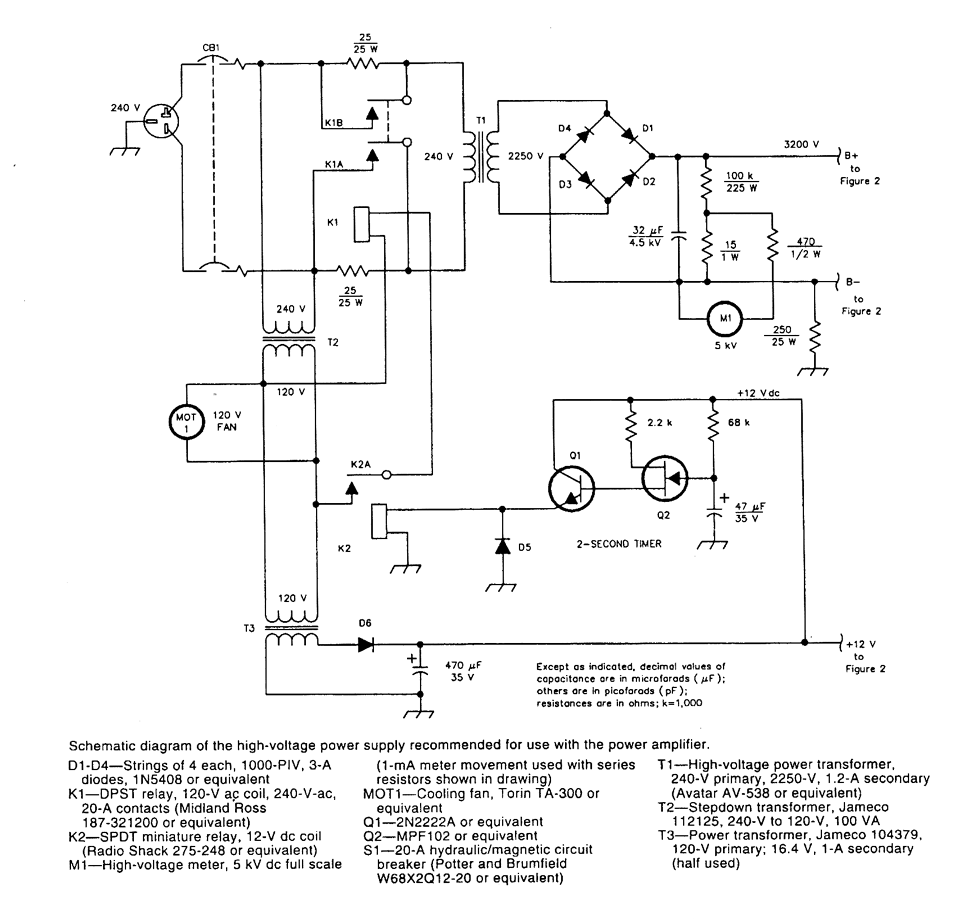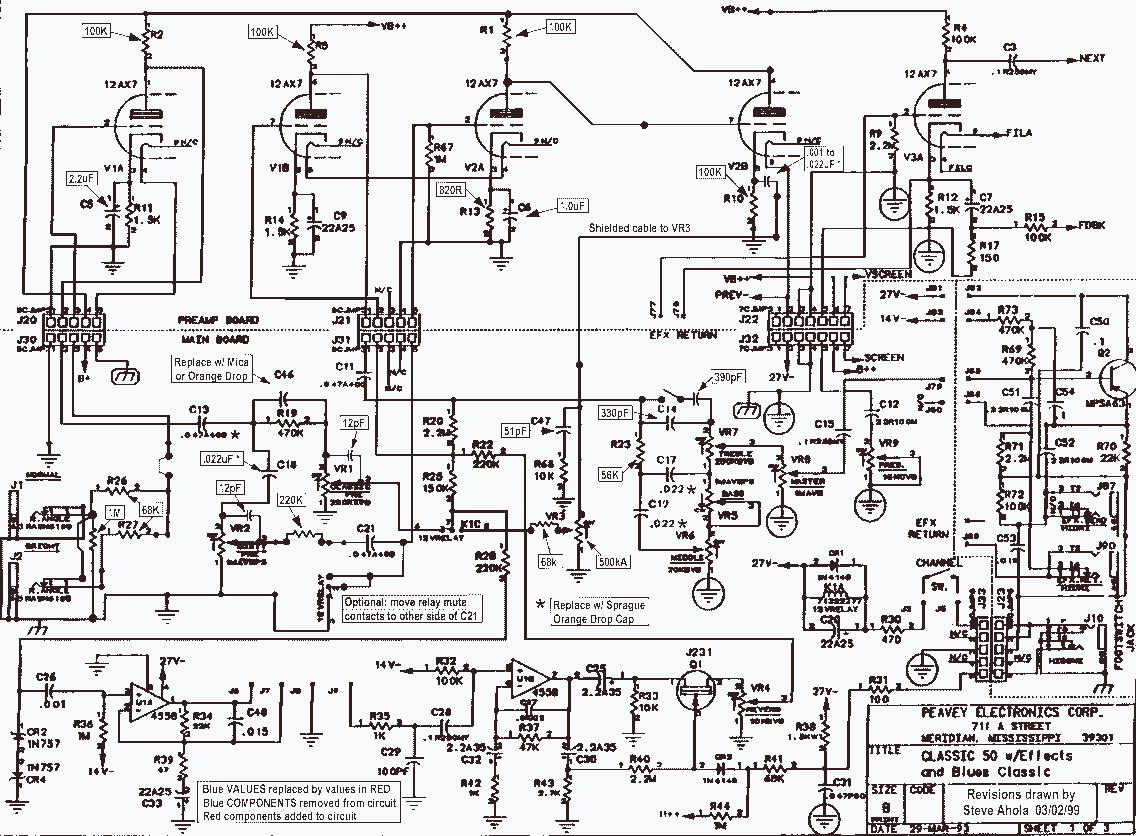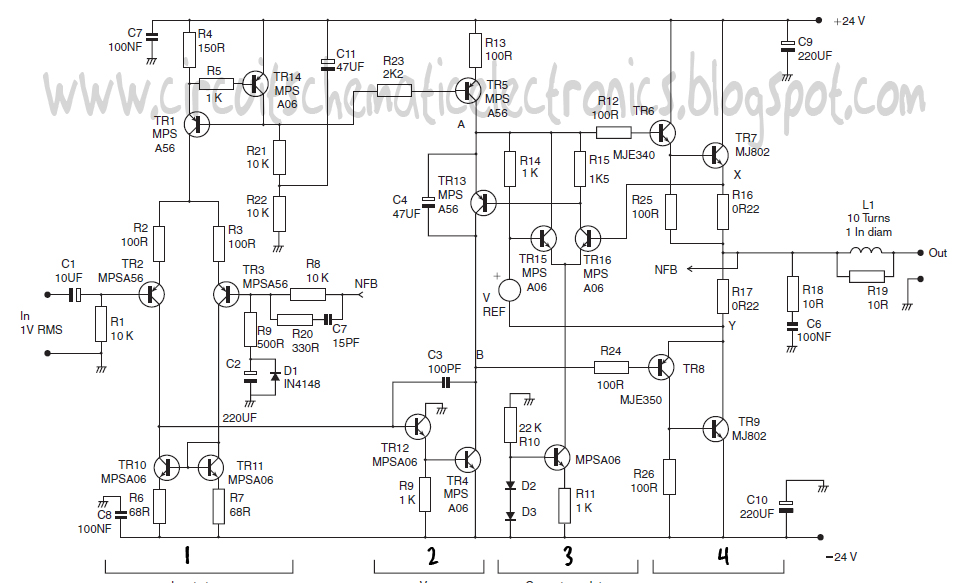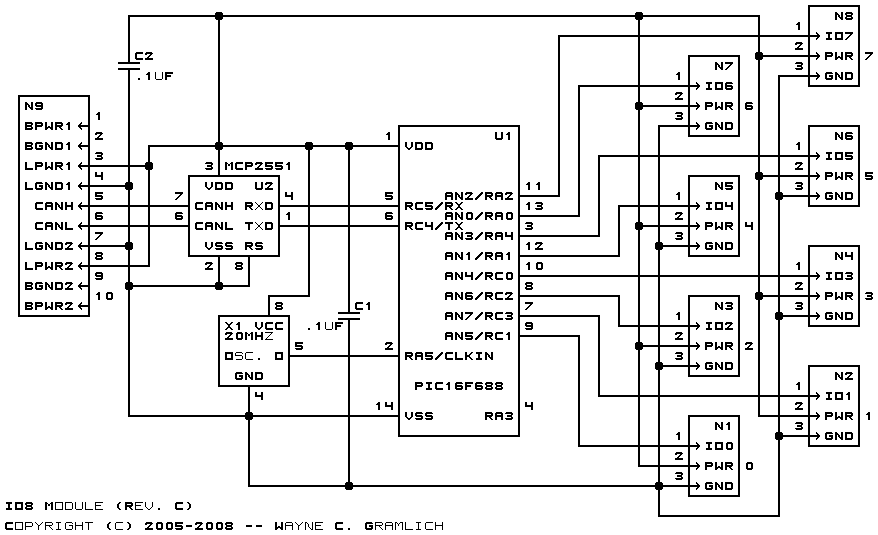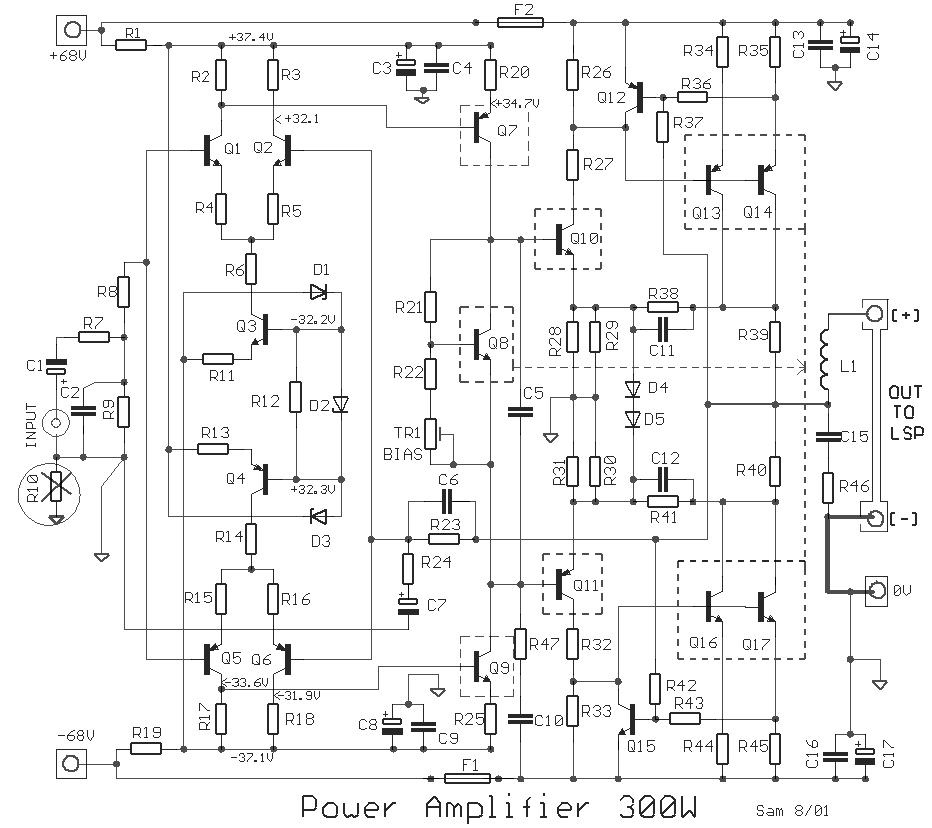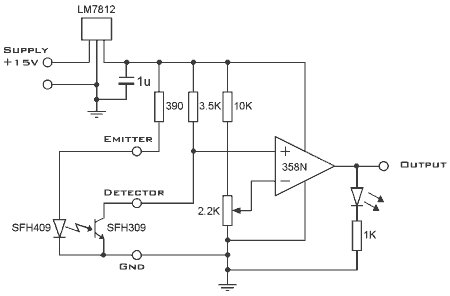
Novel multifunctional high-power amplifier module 01

The D-200W module features a unique design that includes overload, overvoltage, overheating, short circuit, and reverse polarity protection, as well as shock protection for various speakers. The module employs a synchronous dynamic bias circuit to minimize static power consumption, ensuring a fast transient response, high gain, and significant loudness effect. The D-200W adheres to national standards as indicated by a secondary metering station. The basic block diagram is depicted in Figure 3-4. The pre-differential amplification stage, constant current power supply, and laser excitation voltage amplification stage are all designed with constant current loads. The final stage employs a synchronous dynamic bias amplifier. The integrated control circuit provides protection against overheating, overvoltage, and external short circuits, while also supplying the synchronous dynamic bias path and tertiary amplification bias current. The overall quiescent current for the module is 15mA, with the static final stage amplifier consuming only 3 to 5mA, achieving a low static white noise effect. The circuit design is simple, utilizing only three zoom stages, with the capacity to handle large output transient voltages up to the power supply voltage amplitude, which can reach 50V. The transient conversion rate spans from 20Hz to 20kHz, with a peak rate of 50V/μs. The final amplifier uses six special high-frequency, high-power tubes in parallel for output, resulting in very low circuit output resistance. The B port's synchronous dynamic biasing circuit automatically adjusts the output connector, allowing it to handle a wide range of resistive load impedances from high impedance down to 2 ohms, enabling the module to function properly without the need for an additional preamp module.
The D-200W module is designed for high-performance audio amplification, integrating advanced protection features to enhance reliability and user safety. The overload protection mechanism prevents damage from excessive current, while overvoltage protection safeguards the module against voltage spikes. Overheating protection is implemented to ensure that the module operates within safe temperature limits, thereby prolonging its lifespan.
The synchronous dynamic bias circuit is a critical component, allowing for efficient operation by dynamically adjusting the biasing conditions based on the input signal, which minimizes power loss and ensures optimal performance across various operating conditions. This design choice contributes to the module's fast transient response, making it suitable for applications requiring rapid signal changes without distortion.
The amplification stages are meticulously designed to maintain signal integrity and enhance audio fidelity. The pre-differential amplification stage prepares the audio signal for further processing, while the constant current power supply ensures stable voltage levels, crucial for high-quality sound reproduction. The laser excitation voltage amplification stage is particularly noteworthy, as it enhances the signal with minimal noise introduction.
The final amplification stage, featuring six high-frequency, high-power tubes, is engineered for robust output capabilities. The parallel configuration of these tubes allows for increased power handling and reduced output resistance, which is essential for driving various speaker loads effectively. The module's ability to handle low impedance loads without additional preamplification is a significant advantage, simplifying system integration and reducing component count.
Overall, the D-200W module represents a sophisticated solution for audio amplification, combining advanced circuit design with practical protection features, making it suitable for a wide range of audio applications.D-200W unique module design, overload, overvoltage, overheating, short circuit, reverse polarity power source, a variety of speakers shock protection feature set within a modul e. B module uses a unique synchronous dynamic bias circuit, static power consumption to a minimum. It has a fast transient response speed, high gain and loudness effect. D- 200W by a secondary metering station to meet the design refers to the identification of national standard. The basic block diagram shown in Figure 3-4. D - 2 00w pre-differential amplification, constant current power supply, the laser excitation voltage amplification stage is also a constant current load.
Last Stage B is synchronous dynamic bias amplifier. Integrated control circuit in addition to ensure overheating, overvoltage, load external short-circuit protection functions, and supply synchronous dynamic bias path and tertiary amplification bias current song module overall quiescent current 15mA, only static final stage amplifier 3 ~ 5mA, reaches static white noise effect module circuit design simple and only three zoom, most large output transient voltages up to the supply voltage in the power supply voltage amplitude dead when persons 50v, transient conversion rate ZOHz ~ 20kHz band in the high of 50V/ys. Final amplifier uses six special high-frequency high-power tube parallel output chip, circuit output resistance is very low due to the B port synchronous dynamic biasing circuit automatically adjusts the output connector 6 are strong emotional, resistive load impedance from high impedance to limit 2n, the module can work properly without additional preamp module when used.
The D-200W module is designed for high-performance audio amplification, integrating advanced protection features to enhance reliability and user safety. The overload protection mechanism prevents damage from excessive current, while overvoltage protection safeguards the module against voltage spikes. Overheating protection is implemented to ensure that the module operates within safe temperature limits, thereby prolonging its lifespan.
The synchronous dynamic bias circuit is a critical component, allowing for efficient operation by dynamically adjusting the biasing conditions based on the input signal, which minimizes power loss and ensures optimal performance across various operating conditions. This design choice contributes to the module's fast transient response, making it suitable for applications requiring rapid signal changes without distortion.
The amplification stages are meticulously designed to maintain signal integrity and enhance audio fidelity. The pre-differential amplification stage prepares the audio signal for further processing, while the constant current power supply ensures stable voltage levels, crucial for high-quality sound reproduction. The laser excitation voltage amplification stage is particularly noteworthy, as it enhances the signal with minimal noise introduction.
The final amplification stage, featuring six high-frequency, high-power tubes, is engineered for robust output capabilities. The parallel configuration of these tubes allows for increased power handling and reduced output resistance, which is essential for driving various speaker loads effectively. The module's ability to handle low impedance loads without additional preamplification is a significant advantage, simplifying system integration and reducing component count.
Overall, the D-200W module represents a sophisticated solution for audio amplification, combining advanced circuit design with practical protection features, making it suitable for a wide range of audio applications.D-200W unique module design, overload, overvoltage, overheating, short circuit, reverse polarity power source, a variety of speakers shock protection feature set within a modul e. B module uses a unique synchronous dynamic bias circuit, static power consumption to a minimum. It has a fast transient response speed, high gain and loudness effect. D- 200W by a secondary metering station to meet the design refers to the identification of national standard. The basic block diagram shown in Figure 3-4. D - 2 00w pre-differential amplification, constant current power supply, the laser excitation voltage amplification stage is also a constant current load.
Last Stage B is synchronous dynamic bias amplifier. Integrated control circuit in addition to ensure overheating, overvoltage, load external short-circuit protection functions, and supply synchronous dynamic bias path and tertiary amplification bias current song module overall quiescent current 15mA, only static final stage amplifier 3 ~ 5mA, reaches static white noise effect module circuit design simple and only three zoom, most large output transient voltages up to the supply voltage in the power supply voltage amplitude dead when persons 50v, transient conversion rate ZOHz ~ 20kHz band in the high of 50V/ys. Final amplifier uses six special high-frequency high-power tube parallel output chip, circuit output resistance is very low due to the B port synchronous dynamic biasing circuit automatically adjusts the output connector 6 are strong emotional, resistive load impedance from high impedance to limit 2n, the module can work properly without additional preamp module when used.
